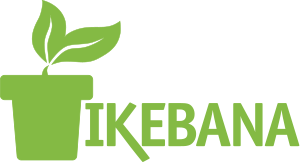Beyond the Headlines Sustainable Innovations Drive a Changing Global News Cycle
- Beyond the Headlines: Sustainable Innovations Drive a Changing Global News Cycle
- The Rise of Data-Driven Journalism
- The Impact of Citizen Journalism and Social Media
- The Role of Artificial Intelligence in News Verification
- Sustainable Business Models for Journalism
- The Future of News Consumption: Immersive and Personalized Experiences
Beyond the Headlines: Sustainable Innovations Drive a Changing Global News Cycle
The modern landscape of information dissemination is rapidly evolving, moving beyond traditional sources and embracing a more dynamic and interconnected approach to delivering what was once simply called ‘news‘. This shift isn’t just about speed; it’s about sustainability, accuracy, and the increasing demand for responsible reporting in a world inundated with data. This transformation is driven by technological innovation, changing consumer habits, and a growing awareness of the impact information has on society.
The Rise of Data-Driven Journalism
Data journalism has emerged as a powerful force, transforming how stories are uncovered, verified, and presented. Instead of relying solely on interviews and eyewitness accounts, journalists are now leveraging large datasets to identify trends, reveal hidden patterns, and hold power accountable. This approach necessitates new skills, including data analysis, visualization, and coding, as well as a commitment to transparency and reproducibility.
The benefits are numerous. Data-driven reporting can expose systemic issues that would otherwise remain hidden, provide concrete evidence to support claims, and offer a more nuanced understanding of complex topics. However, it also presents challenges, such as the potential for bias in data collection and analysis, and the need to ensure data privacy and security.
Effective data journalism requires a collaborative effort between journalists, data scientists, and technologists. This interdisciplinary approach ensures that stories are not only accurate but also compelling and accessible to a wide audience. The future of reporting increasingly relies upon the investigative aptitude afforded by carefully curated data.
| Government Statistics | Cross-referencing with independent audits | Political influence, data manipulation |
| Social Media Data | Sentiment analysis, bot detection | Algorithmic bias, echo chambers |
| Public Records | Multiple source confirmation | Incomplete or inaccurate records |
The Impact of Citizen Journalism and Social Media
The democratization of news creation has been significantly propelled by the emergence of citizen journalism and social media platforms. Individuals are no longer passive consumers of information; they are active participants in the news cycle, reporting events as they unfold and sharing information with their networks. This has broadened the scope of coverage and provided alternative perspectives often absent from traditional media outlets.
However, this shift also introduces challenges related to verifying the authenticity of information. The spread of misinformation and disinformation, often referred to as “fake news,” has become a major concern, undermining public trust in media and fueling social polarization. Fact-checking organizations and media literacy initiatives are crucial in combating this threat.
Social media platforms have a responsibility to address the spread of harmful content on their platforms. This includes investing in content moderation technologies, promoting media literacy, and collaborating with fact-checking organizations. Finding the balance between free speech and responsible content curation is a delicate but necessary task.
The Role of Artificial Intelligence in News Verification
Artificial intelligence (AI) is playing an increasingly important role in news verification, offering tools and techniques to detect misinformation and identify manipulated content. AI-powered systems can analyze images, videos, and text to identify anomalies, cross-reference information with reliable sources, and assess the credibility of sources.
Despite its potential, AI is not a silver bullet. AI systems are only as good as the data they are trained on, and they can be susceptible to bias. Moreover, sophisticated actors can develop techniques to circumvent AI detection methods. The ongoing evolution of AI and its capacity to recognise manipulation requires continuous advancements in order to maintain its efficacy.
Human oversight remains essential in the news verification process. AI should be seen as a tool to augment human judgment, not replace it. A combination of AI-powered tools and the expertise of experienced journalists is the most effective approach to combating misinformation.
- Image Forensics: AI can detect alterations in images, such as cloning, splicing, or manipulation of lighting.
- Natural Language Processing: AI can analyze text to identify fake accounts, bots, and emotionally charged language that may indicate propaganda.
- Source Credibility Assessment: AI can assess the trustworthiness of sources based on their historical accuracy and reputation.
Sustainable Business Models for Journalism
The traditional business models for journalism, primarily reliant on advertising revenue, have been disrupted by the rise of digital media. Declining circulation rates and the dominance of tech giants in the online advertising market have created a financial crisis for many news organizations. This has led to job losses, reduced coverage, and a decline in investigative reporting.
Finding sustainable business models is crucial to ensuring the future of quality journalism. Subscription models, membership programs, philanthropic funding, and government support are all potential solutions. Each approach has its own advantages and disadvantages, and the optimal solution may vary depending on the specific context.
Innovation in storytelling formats and distribution channels is also essential. Podcasts, newsletters, and visual storytelling are examples of formats gaining popularity with audiences. Building direct relationships with readers and creating a loyal community around news are key to long-term sustainability.
- Diversification of Revenue Streams: Relying on multiple sources of income reduces vulnerability to market fluctuations.
- Focus on Audience Engagement: Building a loyal readership is essential for subscriptions and membership programs.
- Investment in Digital Skills: Journalists need to be proficient in data analysis, social media, and content creation.
- Collaboration and Partnerships: Sharing resources and expertise can help news organizations to reduce costs and expand reach.
| Subscription | Direct revenue from readers | Requires compelling content and strong brand loyalty |
| Membership | Builds community and fosters engagement | Requires ongoing engagement and exclusive benefits |
| Philanthropic Funding | Provides financial support for independent journalism | Raises concerns regarding editorial independence. |
The Future of News Consumption: Immersive and Personalized Experiences
The way people consume what historically was ‘news’ is continuing to evolve, with an increasing demand for immersive and personalized experiences. Virtual reality (VR) and augmented reality (AR) technologies offer the potential to transport audiences to the scene of an event and provide a more visceral and engaging experience. Personalized news feeds and AI-powered recommendation systems can deliver content tailored to individual interests and preferences.
These technologies also raise ethical concerns. VR and AR experiences can be manipulative and misleading if not carefully designed and presented. Personalized news feeds can create filter bubbles and reinforce existing biases, limiting exposure to diverse perspectives. Striking a balance between personalization and breadth of coverage is essential.
The future of news consumption will likely be characterized by a combination of immersive technologies, personalized content, and a continued emphasis on accuracy and responsible reporting. News organizations that embrace these trends while upholding the core values of journalism will be best positioned to thrive in the digital age.


Lascia un Commento
Vuoi partecipare alla discussione?Sentitevi liberi di contribuire!